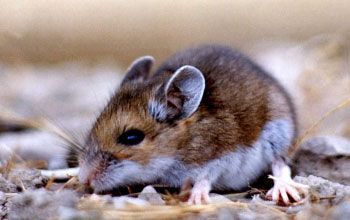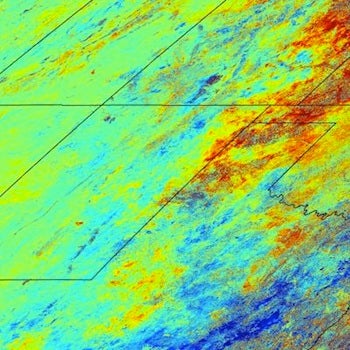
La página que intenta visitar sólo está disponible en inglés. ¡Disculpa!
The page you are about to visit is currently only available in English. Sorry!


Deer Mouse. (Image courtesy of the National Park Service)
Nine years ago, researchers took to the spare desert of Juab County, Utah, in search of something deadly. They donned hazmat-like suits to protect themselves. Looking like moonwalkers in the sand and sage, they called themselves “hantanauts.” After setting 1,728 small traps each evening, the team left and returned come morning for their target: deer mice. Those caught were tagged, measured, and tested for hantavirus, in what today is a nine-year study.
Hantavirus is carried by deer mice, but, as it turns out, humans don't get it by handling live mice, and the courageous hantanauts from the University of Utah soon quit wearing such drastic attire. The virus is usually transmitted to people when they unknowingly breathe in fecal dust lurking in the sunless corners of sheds, garages, or closets. Few catch the disease, thankfully, because it’s a pretty dire situation: After initial flu-like symptoms, about 40 percent of patients die, often within days.
Now, in a quest to help us better avoid the disease, the hantanauts have compared the data they collected from 2003 to 2005 to satellite vegetation images from the same region and period. This study—a study in extreme scales—found that plant cover growth is an excellent indicator for where hanta might crop up. In the Southwest, rains nourish juniper, sagebrush and other annuals, which generate seeds and feed insects, which deer mice devour. So as plant communities surge, mice and, thus, hanta, do too, and it can be predicted from high above. The idea, ultimately, is to develop seasonal “disease-risk maps” that, like a complex Venn diagram, will show where the populations of mice and men are likely to overlap, from year to year.

This satellite image depicts trends in plant cover in the Four Corners region of the Southwest between June of 2003 and 2004. Yellow and red areas had less plant cover in 2004 compared to 2003, while blue areas had more cover. Deer mice populations showed similar trends, only delayed. (Image courtesy of the University of Utah)
The study’s three-year data set allowed its authors to see just how booms in vegetation and mice correlate. "You can think of [more vegetation] as a kind of air drop of food for the mice," said Thomas Cova, a University of Utah professor of geography, in a press release. "It's rained and suddenly there's just so much food that they're rich. They get fat, population density goes up, and about a year-and-a-half later population peaks." That may be enough time to take action in areas where hanta will likely become more prevalent.
Interestingly, the portion of hanta-positive mice within the study's population stayed constant. After a wet season, there’s a greater hanta hazard only because there are more mice overall. In theory, then, you can breathe easiest in the Southwest following a few dry years, at least in your garage (this is not medical advice). And with luck, before long similar satellite techniques will help us anticipate the booms and busts of other horrendous afflictions like bubonic plague, rat-bite fever, and Lyme disease, whose carriers are tied to vegetation as well.